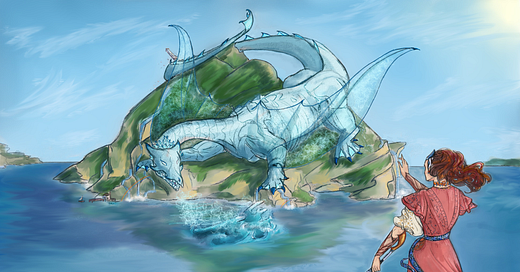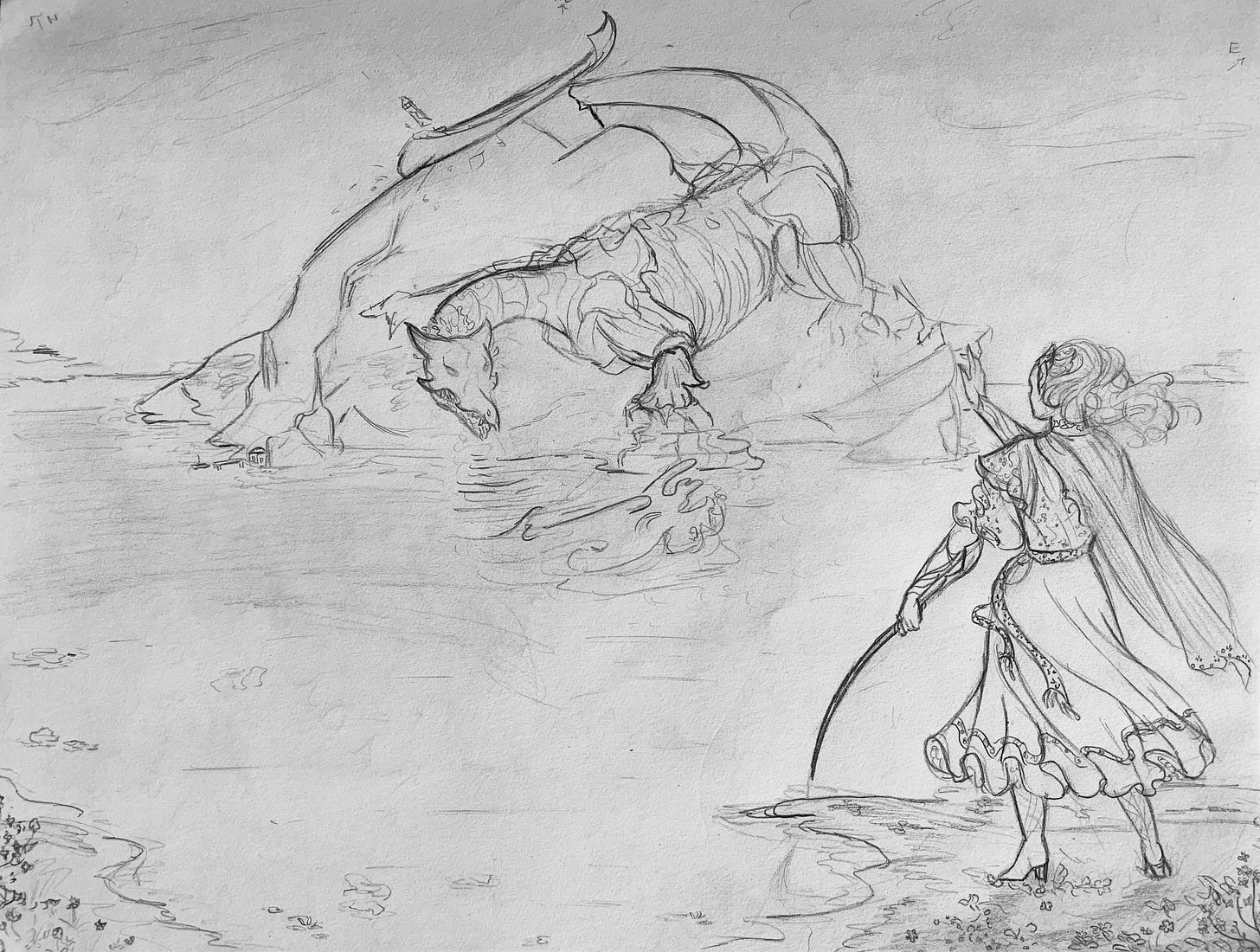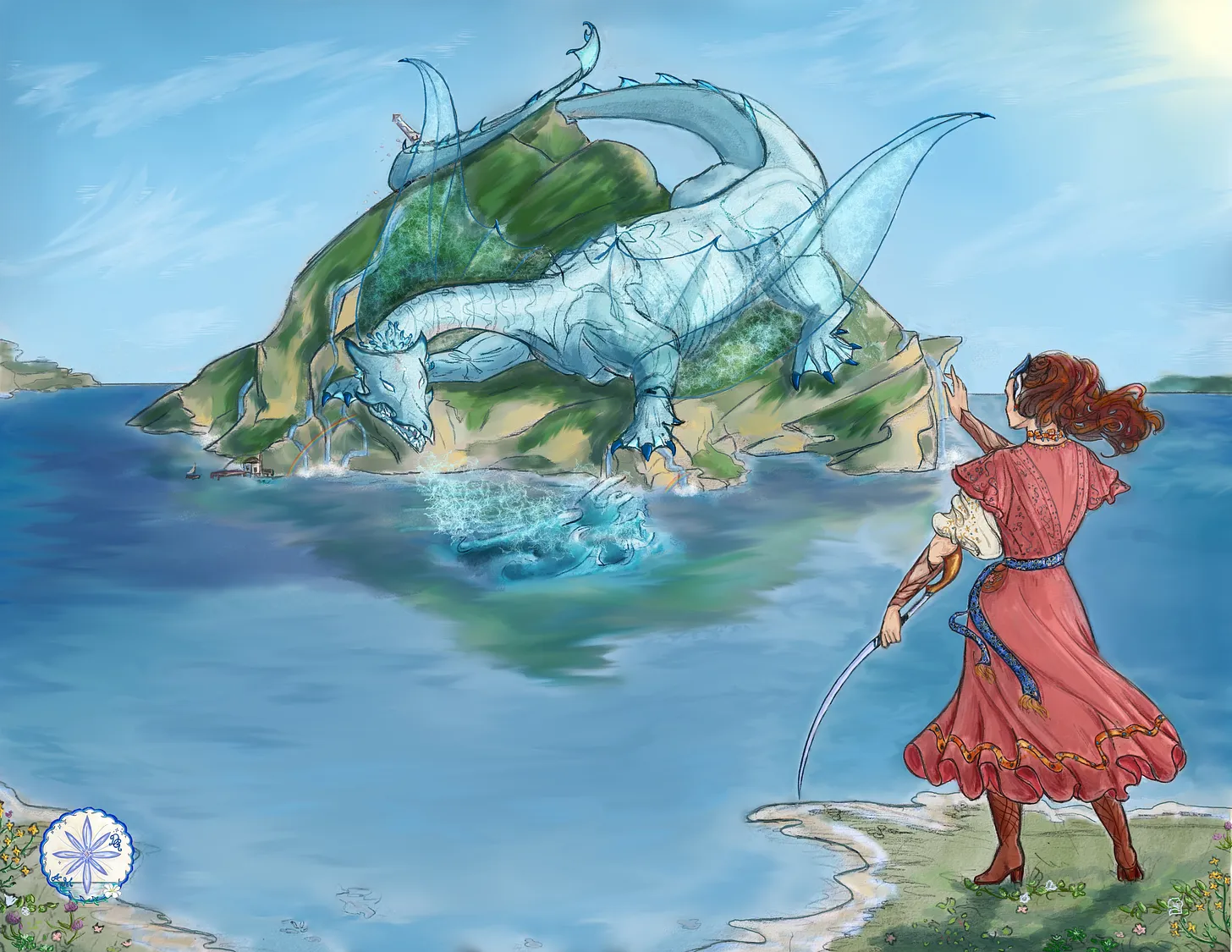It was a dragon. Not just any dragon, but one of the vanaile, fluid as water. Its wings were crisp like frosted mist, disappearing against the sky, glassy skin like an icy skeleton, sea-pearls and frilled waves cresting its skull with its eerie white eyes, translucent enough that the sun cast iridescence across the turbulent waves.
As it looked at Alandis across the bay, clutching at the mossy island of Nan’mier, the tail, edged like the seica, curled about, crushing the third lighthouse that had marked the upper terrace.
. . . tail and talons cracking the stone beneath it as the water dripping from it formed rainbowed waterfalls that spilled over the edge into the sea. Usually the dragon’s honor was enough to get a little breather, but not this time. At least, not that kind of breather. The vanaile let out a fierce breath, not of fire, but of pouring, rippling steam, so violent that the water crashed and crested, pounding over the bay to meet the girl on the bank
- Thérèse Judeana, from Wingswept: The Dragon and the Dove,
After an initial rough sketch on paper, I took the drawing, as usual, into Krita, a free artist’s software, to add all the details.
Here you can compare the final image with the initial sketch.
As you can see, one detail that was removed was Alandis’ cape, which I decided was a little too busy for the image.
Wingswept, while drawing slightly from French and Basque language and cultures, leans more towards Lithuania in words, costume, cultural influence, and, if you’ve read it, the presence of amber.
The flowers are inspired by various species known to grow in sandy soil, particularly those which could grow in a climate such as Lharmeval’s, the kingdom in which Alandis lives. Beach morning glories, beach purslane, and thrift, along with the anomalous rue, a plant also important in Lithuania - it’s known as the herb of grace, something seen even in Shakespeare’s Hamlet, according to Ophelia; and Lithuanian brides traditionally wear crowns of rue as a symbol of their maidenhood. The symbolism here is of Alandis’ single state as well as a nod towards her future, or perhaps to the struggle she has with her vocation (read to find out!)
The Vanaile, or “Water Wings” in Lharmeval’s language, is inspired by the turquoise ice of Lake Siberia, one of the most beautiful sights, in my opinion. The Vanaile’s face is crowned with a stripe of pearls down from her brow, and a frill like ocean spray radiates from behind her skull. Her tail echoes the shape of Alandis’ seica, the weapon and walking staff of Lharmevalan women. Rather than breathing fire, our Vanaile breathes steam.
Finally, Alandis’ costume is inspired by shades of amber - amber rose for the body of her travel dress, with an embroidered stripe of amber gold. These colors highlight her femininity despite her role of strength as the Dragon-Fighter. Her bodice is based off of one of my favorite clothing designs, which I’ve been wearing almost to pieces at this point - an eyelet lace shrug with flared butterfly sleeves. The embroidery contains the traditional eyelet designs as well as hearts - another hint. The embroidered ivory sleeves of her blouse, the half-hidden embroidered purse at her waist, and the satin sash she wears, are taken from Lithuanian traditional dress. The sash was considered the most important piece of the costume, and was worn even after the rest of the costume was laid aside for modern attire. The headpiece is partially inspired by the intricate fairytale headdresses and headbands of the Edwardian era; and her necklace is, again, of amber and lapis lazuli.
Thank you for reading Stella Maris Designs! Please consider supporting my work as a Catholic artist by a donation or paid subscription. 10% of all proceeds will be donated to good Catholic charities. Thank you!





